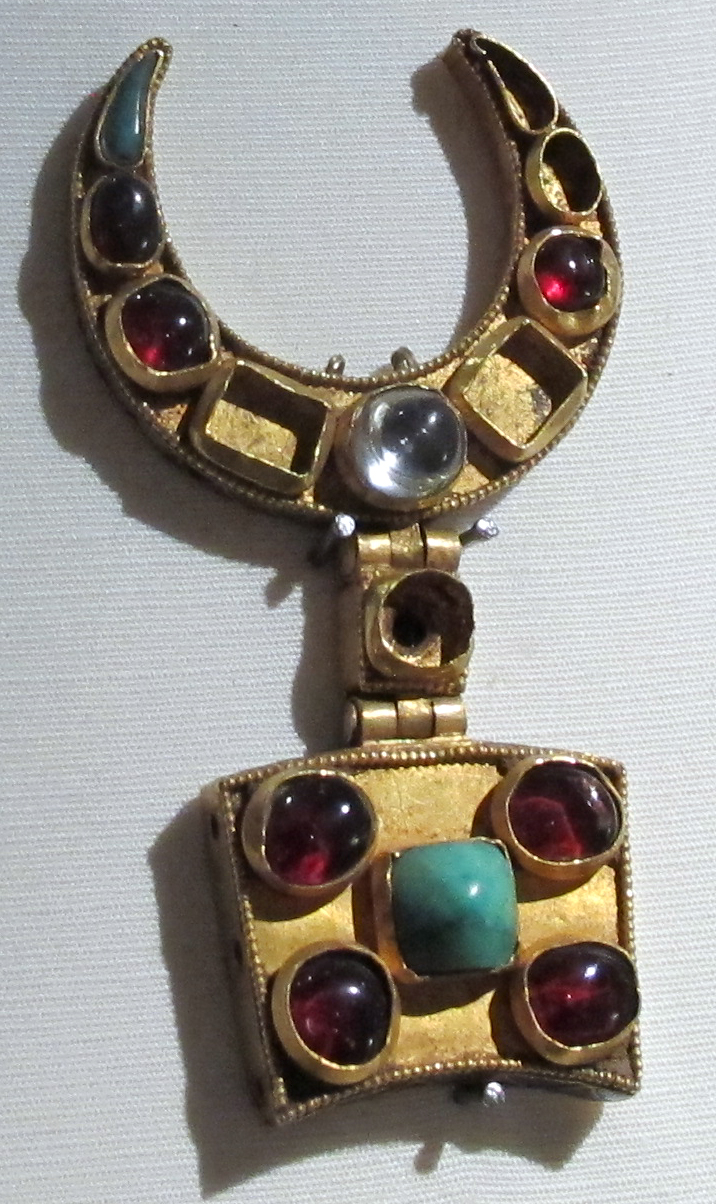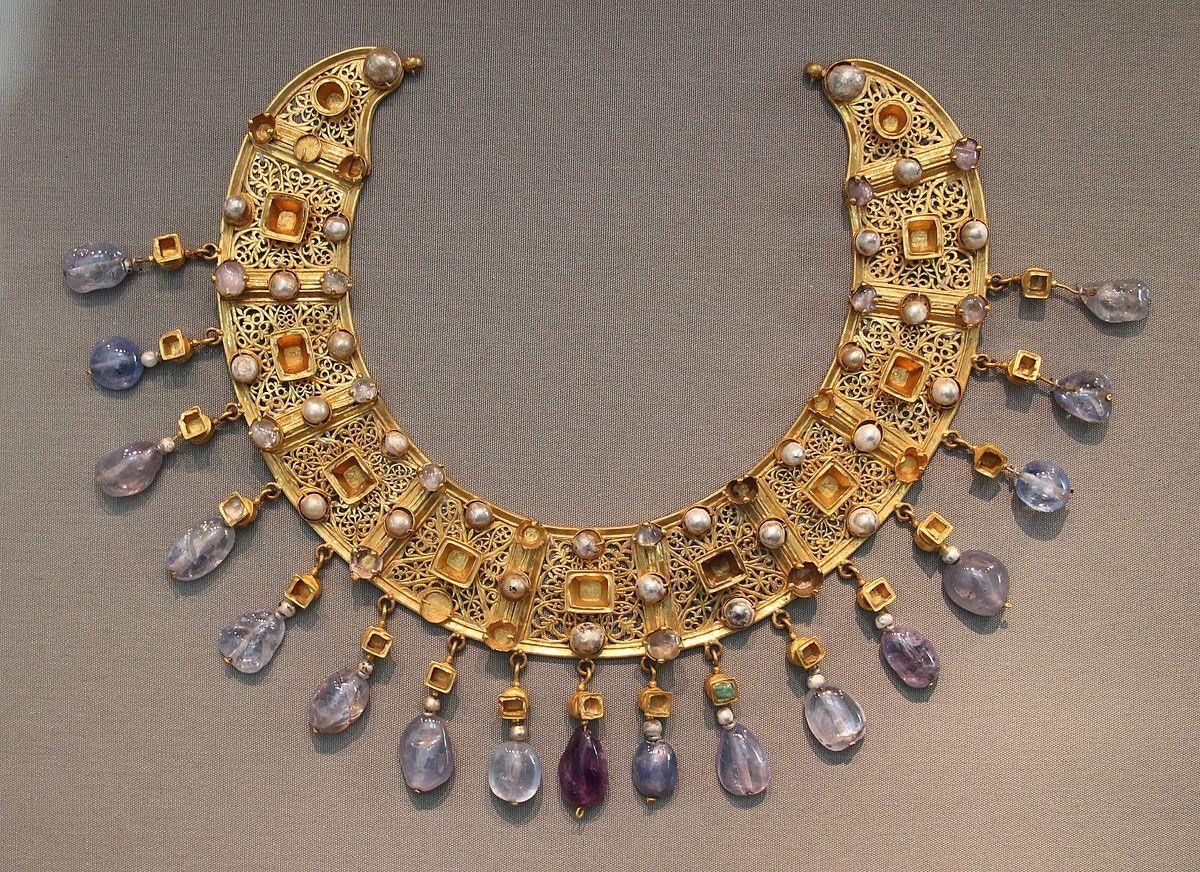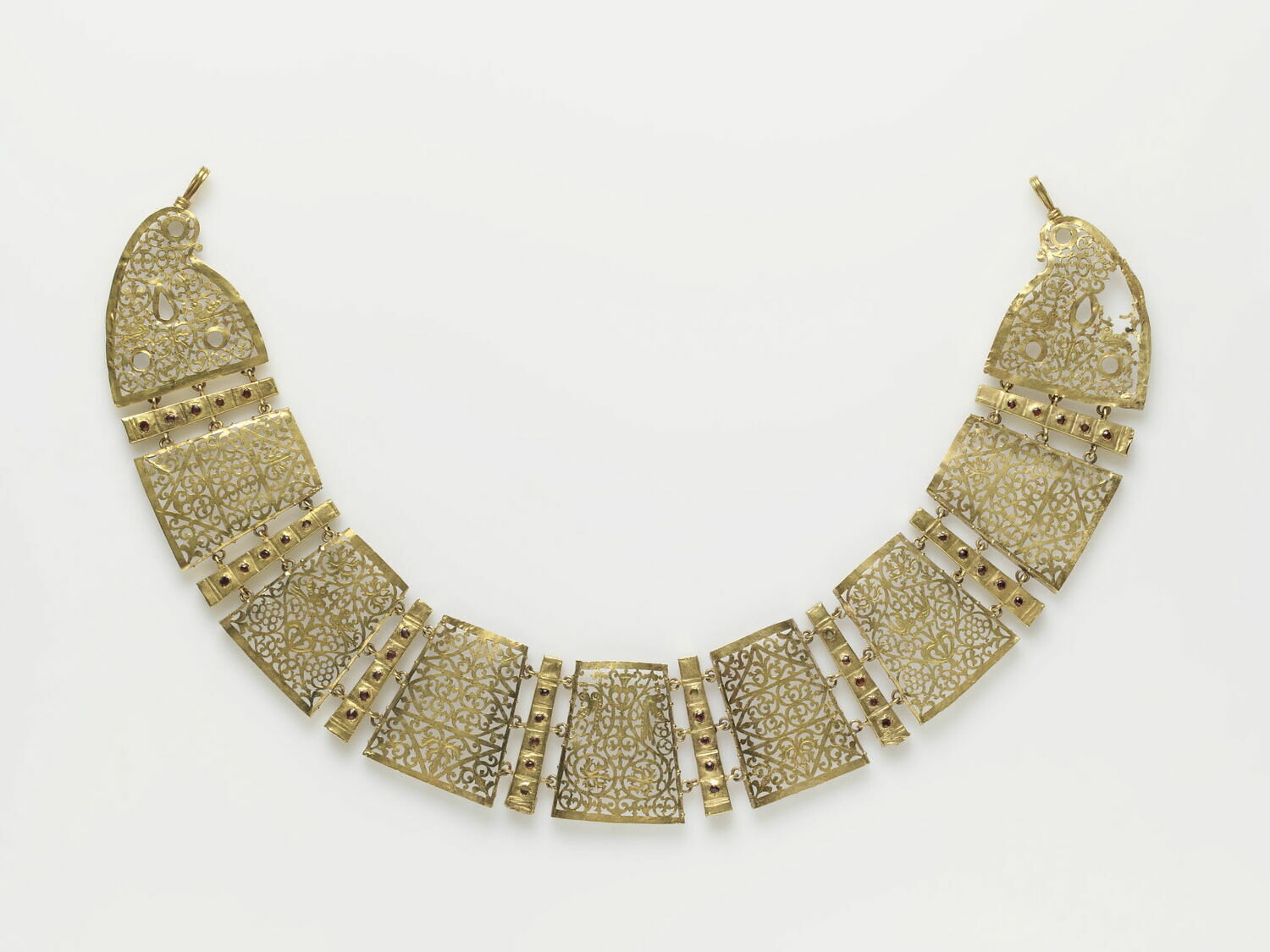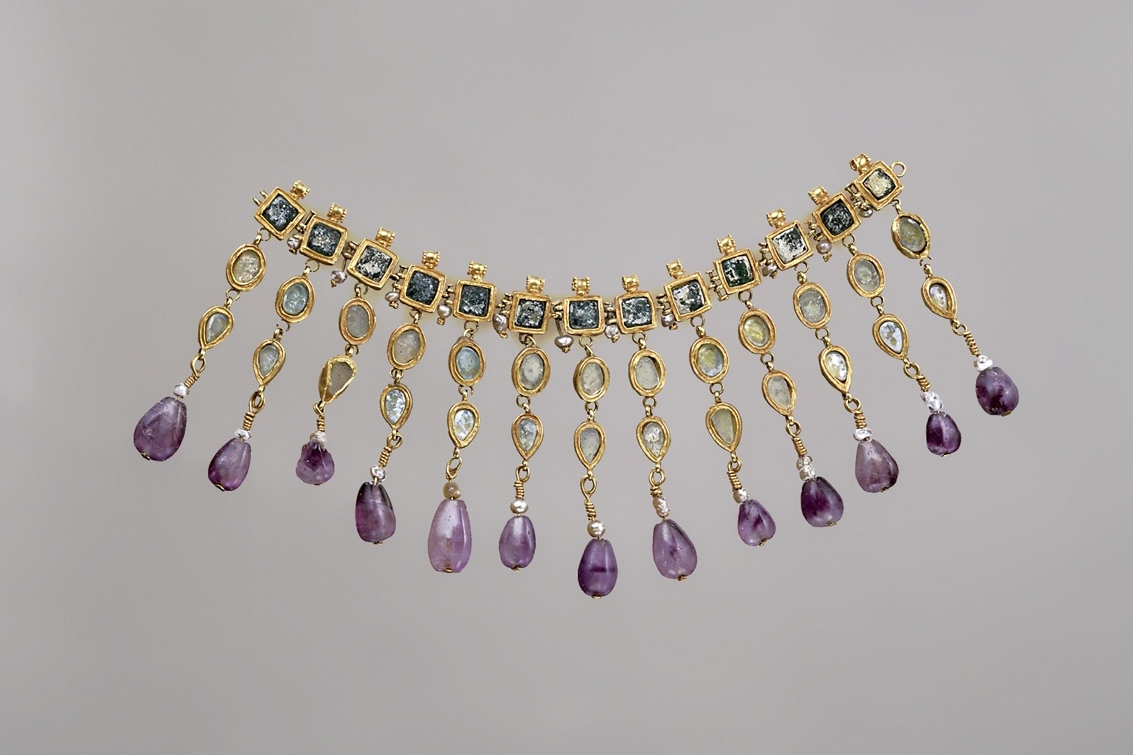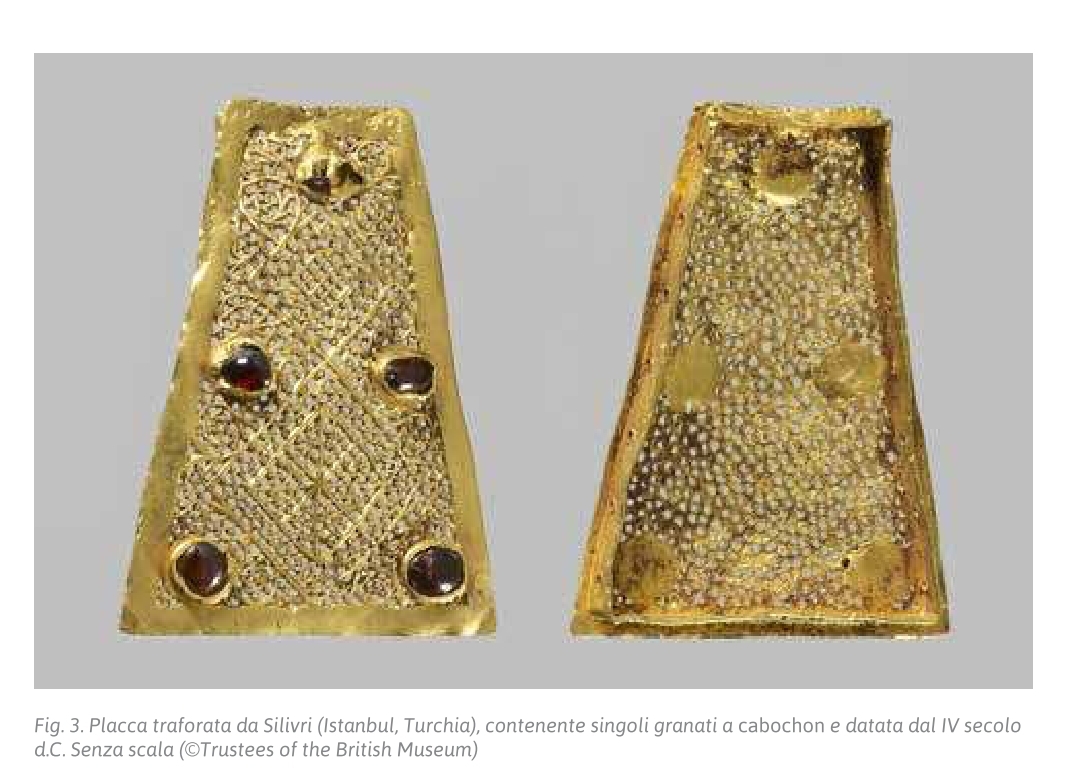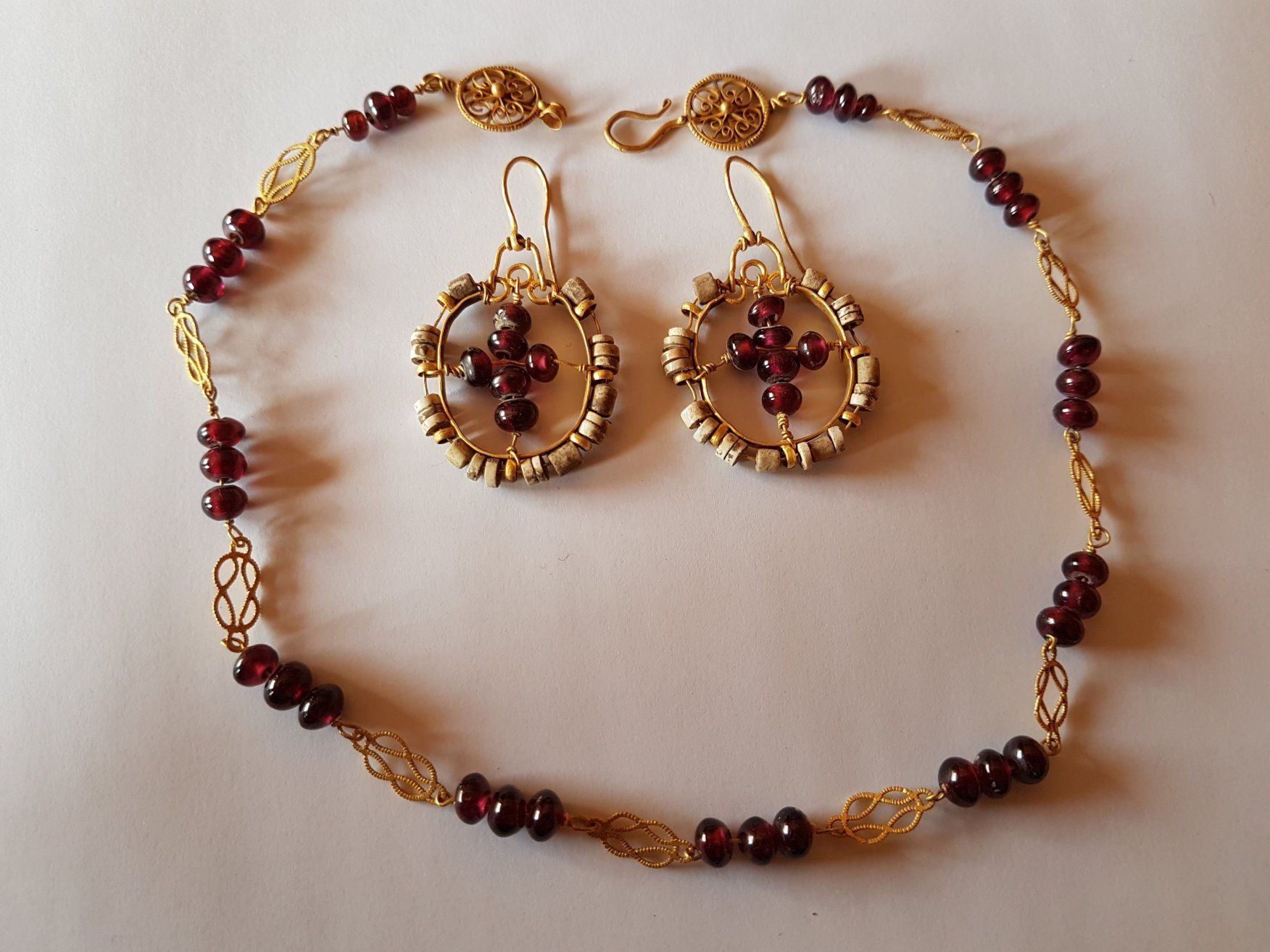
Byzantine jewelry collar from the grave of an Avar little girl, Kiskőrös-Slaughterhouse, Hungary. Made of gold with garnets, dated to the 7th century.
In the Magyar Nemzeti Múzeum, Budapest
museum article >> [link]
“Garnets of unparalleled size and beauty mounted in gold sheet; in this period, gemstones of such high quality and large size were only used in Byzantine workshops for the production of first class jewelry for the elite.
As usual in the early Middle Ages, a great number of amulets and apotropaic objects come to light from Avar Period children’s graves. These are mementos of the period’s high child mortality rate, as well as of parents’ anguish. In the late Avar Period, rattles were quite popular, but rabbit bones, miniature tools, eagles’ talons and crosses also occur. As the case of a 8-10-years-old girl buried in Kiskőrös suggests, other measures could also have been taken to ward off evil spirits. This child must have been a cherished member of her family; her ornate burial costume is unmatched, and not only in the Carpathian Basin. A similar piece to her jewel collier sewn with gems could have perhaps be mentioned from the Ravenna mosaic depicting the Empress Theodora. Garnets the size of walnuts were sewn to the dress embroidered in gold thread; certainly, the garment was brought (or looted) from Byzantium by an Avar warrior. The girl’s fine gold earrings are also first quality, Antique style goldsmith’s works; gilt silver bracelets and gold rings adorned her small hands and fingers. The little girl, who died too early, was laid to rest as a princess. Along her left side an axe was placed, so huge that most probably she would have been unable to lift it while she was still alive. Tools rarely occur in Avar graves, but of course the little girl from Kiskőrös did not receive the axe because she had had used it during her lifetime. The sharp iron tool served as protection against evil forces, so that the girl’s eternal rest may be undisturbed.”

© Magyar Nemzeti Múzeum

© Magyar Nemzeti Múzeum
The same style of the stone setting was used to create the Warminster Jewel, the 9th century Anglo-Saxon aestel or manuscript pointer.
“The jewel is made from rock crystal and set in a beaded wire frame of gold. At the centre there is either a blue glass bead or a lapis lazuli cabochon.” [source]




